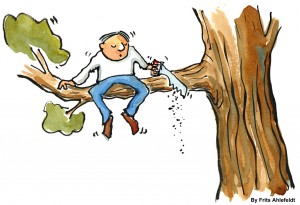 Radical change is like crack to me. I live for the adrenaline rush of a big, new thing.
Radical change is like crack to me. I live for the adrenaline rush of a big, new thing.
So when I sit down to make New Year’s resolutions, I’m like a sugar addict opening up a new bag of Oreos, or a shoe fanatic at a DSW sale. The switch flips and I just go. And I go big.
But then, not surprisingly, my grand resolutions for change often fall apart. Because, if left to my own devices and my mad rush for a new start, I tend to envision, not considered change, grounded in what’s come before and incorporating lessons learned, but change made out of a wild and blind optimism. It’s not the really the big changes that are the problem here, but more my ill-considered way of getting to them.
Clearly I need some sort of help. “Hi, my name is Anne, and I’m a change-a-holic.”” Hi, Anne.”
For the past couple of years, my help has been Suzanna Conway’s workbook, Unravelling the Year Ahead.
Conway’s template has many elements that recommend it (not the least of which is that you can print it out for free from her website), but I believe its special gift is its considered attention to the act of reviewing and saying farewell to the old year, a year that, depending on its success-to-failure ratio, my positivising change addict self might want to avoid revisiting.
As I work through Conway’s exercises, I am asked to contemplate the past year in its entirety, not just its achieved goals and other happy successes, but also its disappointments and hurts. And not just those hurts perpetrated by others but also, perhaps most especially, those I perpetrated.
In other words, I am asked to consider my failures. And I am asked to forgive myself. Completely.
Now, I don’t know about you, but I find the act of forgiving myself to be hard work. Because I tend to feel a lot of shame about my past mistakes. And that shame keeps me stuck.
But this is why I think Conway has hit on something important here.
Most shame researchers agree that there is a distinct difference between shame and guilt. Guilt is about wishing you’d done something differently; shame is about wishing you were someone different. Shame is a feeling that you, at your core, are not worthy, not good enough.
So when I say I tend to feel a lot of shame about my past mistakes, what I am really saying is that I feel so bad about these mistakes that I feel really bad about me. And this emphasis on the badness of me vs. the badness of my actions, if I allow it to fester underground, tends to stop real change in its tracks.
 Because if you think about it, there is truly nowhere to go from shame, from a sense of unworthiness; it’s a stuck place. If I’m not worthy, if I’m truly a bad person, then how in the world will I ever be able to make amends or make a different choice the next time around? And if I can’t make different choices, then why should I even bother to take this New Year’s resolution thing seriously?
Because if you think about it, there is truly nowhere to go from shame, from a sense of unworthiness; it’s a stuck place. If I’m not worthy, if I’m truly a bad person, then how in the world will I ever be able to make amends or make a different choice the next time around? And if I can’t make different choices, then why should I even bother to take this New Year’s resolution thing seriously?
Conway’s template, with its emphasis on – no, it’s absolute requirement of – self-forgiveness, attacks this shame-based stickiness head on and robs it of its power to hold us back.
Which is why it works for me.
Don’t get me wrong. I’m not suggesting we should sugarcoat our past actions and avoid feeling guilt about the ways in which we’ve screwed up. Quite the contrary.
Guilt, while admittedly uncomfortable, is also a particularly helpful emotion. If faced honestly and from a place of empowerment, it allows us to accept our mistakes, broken promises and goals unachieved, grieve the harm we might have perpetrated on ourselves or others, forgive ourselves for being imperfect and move on with the intention of making a better choice next time.
It’s only when guilt morphs into shame that it becomes unhelpful and disempowering. Sticky.
Now, I don’t know Conway personally, nor do I have any professional interest in her work. So I’m not particularly invested in whether or not you use her template specifically. I’m sure there are many New Year’s resolution tools that will work in this same way, and you are encouraged to find one that works for you.
Just make sure that, whatever tool you use, it’s one that first encourages you to take a long, perhaps hard, look back at the old year before you begin planning the new. One that helps you accept and forgive the old regrets and disappointments, the goals unreached, the wish-I-could-haves, the why-didn’t-Is, and moves you out of any shame you feel about what’s come before so that you can envision, with clarity, purpose and, yes, optimism, what’s next.
Because the new year is upon us. And it may be time for some big changes.
———————————–
What about you? Are you feeling guilt or shame about some part of this past year? If so, consider writing about it in a comment below. According to shame researcher Brene Brown, outing shame is the first step in robbing it of its power.
And, if this post got you thinking, you might also want to check out Every Fall Makes You A Better Rider and Roadside Assistance for Resolution Breakdowns.





This is beautiful! And, oddly enough, your blog is the second in a week this has been brought to my consciousness. Here’s my sign! 🙂
Yay! So glad to be a part of the process!